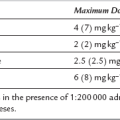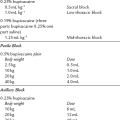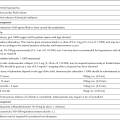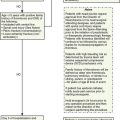In today’s fast-paced world, falling asleep quickly can often feel like an elusive goal. For many, struggling with sleep can lead to frustration and decreased quality of life. Understanding and implementing clinical strategies for rapid sleep onset can be transformative, providing practical solutions to achieve restful nights. This article explores Quick Sleep Techniques to falling asleep faster, integrating both scientific insights and actionable tips.
Understanding Rapid Sleep Onset
Achieving rapid sleep onset involves both physiological and psychological processes. It requires your body and mind to transition from a state of wakefulness to sleep swiftly and seamlessly. Various factors can impact this transition, including stress, lifestyle choices, and sleep environment. However, by applying specific clinical strategies, you can enhance your ability to fall asleep more quickly.
Quick Sleep Techniques
1. Cognitive Behavioral Therapy for Insomnia (CBT-I)
Cognitive Behavioral Therapy for Insomnia (CBT-I) is a structured, evidence-based approach that addresses the thoughts and behaviors disrupting sleep. This therapy helps individuals identify and change negative sleep patterns and beliefs. By focusing on improving sleep hygiene and reducing pre-sleep anxiety, CBT-I can significantly improve the speed at which one falls asleep. Techniques such as sleep restriction, stimulus control, and cognitive restructuring are central to CBT-I, offering effective methods to enhance sleep onset.
2. Relaxation Techniques
Incorporating relaxation techniques into your pre-sleep routine can significantly reduce the time it takes to fall asleep. Methods such as progressive muscle relaxation, deep breathing exercises, and guided imagery can help calm the mind and body. Progressive muscle relaxation involves systematically tensing and then relaxing different muscle groups, which helps release physical tension and promotes a sense of calm. Deep breathing exercises, like the 4-7-8 technique, focus on slow, controlled breaths to activate the parasympathetic nervous system, aiding in relaxation.
3. Sleep Environment Optimization
Creating an ideal sleep environment is crucial for facilitating rapid sleep onset. This includes managing factors like light, noise, and temperature. A dark, quiet, and cool room is generally conducive to better sleep. Consider using blackout curtains, white noise machines, or a fan to block out disruptive environmental factors. Additionally, investing in a comfortable mattress and pillows can contribute to a more restful sleep environment, making it easier to fall asleep quickly.
4. Sleep Hygiene Practices
Good sleep hygiene is fundamental to improving sleep onset. Establishing a consistent sleep schedule, where you go to bed and wake up at the same times every day, helps regulate your internal body clock. Avoiding stimulants such as caffeine and nicotine close to bedtime is also essential, as these substances can interfere with your ability to fall asleep. Limiting screen time before bed, due to the stimulating effects of blue light, and engaging in relaxing pre-sleep rituals, such as reading or taking a warm bath, can further enhance sleep onset.
5. Mindfulness and Meditation
Mindfulness and meditation practices can be highly effective for calming a busy mind and promoting sleep. Techniques such as mindfulness meditation, which involves focusing on the present moment without judgment, can help reduce stress and anxiety that may otherwise keep you awake. Incorporating short meditation sessions into your evening routine can help ease the transition from wakefulness to sleep, leading to quicker sleep onset.
6. Pharmacological Interventions
In some cases, pharmacological interventions may be necessary to address difficulties with sleep onset. While over-the-counter sleep aids and prescription medications can offer short-term relief, they should be used cautiously and under the guidance of a healthcare professional. Non-benzodiazepine medications, such as zolpidem or eszopiclone, are commonly prescribed for their efficacy in improving sleep onset while minimizing dependence and side effects.
Conclusion
Falling asleep quickly is an achievable goal with the right strategies in place. By incorporating clinical approaches like Cognitive Behavioral Therapy for Insomnia, relaxation techniques, optimizing your sleep environment, practicing good sleep hygiene, and exploring mindfulness and pharmacological options, you can enhance your ability to fall asleep fast. Remember, consistency is key, and combining these strategies can provide comprehensive support for improving your overall sleep quality. Prioritizing these practices can lead to more restful nights and better health and well-being.
By understanding and applying these techniques, you can take control of your sleep and enjoy the benefits of a good night’s rest.





